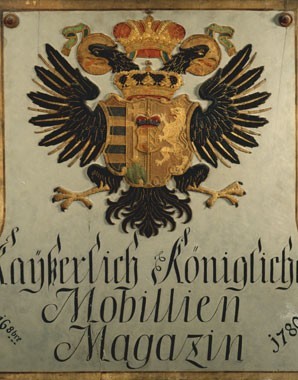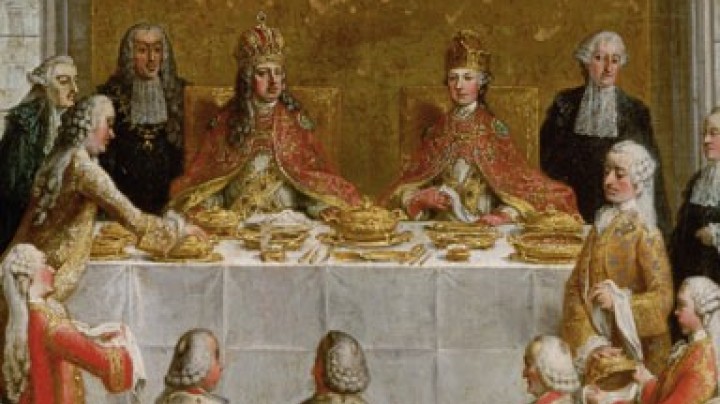… And what about middle-class households?
In Biedermeier households, the parlour was not only the centre of family life; it was also used as a means of distinguishing and displaying social status.
Adalbert Stifter describes the middle classes’ desire to demonstrate their social status in his essay Die Streichmacher [The Tricksters], published in 1844.What one sits, lies upon, is not for sitting, lying or standing but for looking at, so that the neighbour on a visit from his cave to ours may see it and be vexed by it … the neighbour must be vexed that his place is not so beautifully decorated. Just as one requires a certificate of poverty to be awarded a contemptible stipend …, so these objects must serve as certificates of wealth, even if wealth is lacking, which is why the compartments and boxes are far more precious than what they contain …. Rugs, damasks, coffee cloths, wardrobes, tables, chairs, sofas – all these things are themselves tricksters; for the carcase is of paltry softwood, every table has feet of deal, but wears walnut or mahogany trousers … – all that matters is that they are called beautiful objects … and throw dust in the visitor’s eyes, [to suggest to him that] he has come to God only knows what a genteel and select house. That this is the purpose of these objects, and not, as a simpleton might believe, their utility, is evident from the fact that the better compartments of the cave-dwelling are not lived in, that immediately after a visitor has left, a linen cover is spread over the wooden cover of these objects.
Adolf Loos commented retrospectively on the rising status of the trade of paper-hanging and upholstering.The paper-hanger and upholsterer … soon recognised his advantage … On his signboard he deleted the word Polsterer and replaced it with Dekorateur. That had a much finer sound to it.
In an era of rapid technological change, social upheaval and severe repression from the state – any statement intended for publication was subject to censorship – people turned to innocuous amusements. They withdrew to the cosy haven of their own four walls, with light-filled rooms furnished with striped and flowered wallpaper, curtains and upholstery.
Similar to the separation of functions in aristocratic households, living quarters were divided into kitchen, bedroom, living room and dining room. Where this was not possible due to limitations of space, small areas or corners within rooms were used for particular activities and furnished accordingly. New types of furniture emerged – secretaires, cupboards, tables and suites of seating furniture were reduced and designed upon functional rather than ornamental lines, although they still featured precious intarsia and marquetry work. Special periodicals devoted to interior design disseminated the new taste.
The Biedermeier era saw a boom in trade and industry – for example the silk-weaving industry or cabinet-making and upholstery. Various different trades and crafts were involved in the interior decorating business: painters, ceramic stove-fitters, carpenters, cabinet-makers, parquet manufacturers and bronze workers. The upholsterer and paper-hanger now took on the role of interior decorator.
Nature found its way into the home: flower boxes and pots were placed outside windows, birdcages and painted screens decorated rooms, display cases were filled with an array of floral porcelain, painted glasses, ornamental boxes and silver. Emperor Franz II (I) also enjoyed gardening.
Nature was not only worshipped in the home: Franz II (I) started a trend by choosing the spa resort of Baden as his summer residence. The Court household and the higher nobility followed in his footsteps. The wealthier members of the middle classes followed suit and flocked to the spa town or moved to their country houses to spend the summer. Some went on ‘excursions to the country’ to the Kahlenberg (the hill to the north of Vienna), or decamped from the city to Vienna’s ‘backyard mountains’, the Rax, Semmering and Schneeberg, using the southern railway line completed in 1842.



















